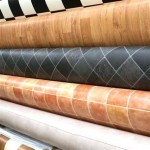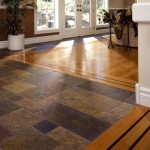Underlayment is one of the most important elements of any laminate flooring installation. It provides a smooth, even surface for the laminate planks to rest on, as well as a barrier that prevents moisture from seeping in and damaging your floor. When installing laminate flooring on concrete, the right underlayment is essential for a successful and long-lasting installation. Here’s what you need to know about underlayment for laminate flooring on concrete.
Why Do You Need Underlayment for Laminate Flooring on Concrete?
Underlayment is important for any laminate flooring installation, but it’s especially important when installing laminate flooring on concrete. Concrete is a porous material, which means it can absorb moisture if it’s not properly sealed or protected. This can lead to a number of problems, including mold, mildew, and water damage. Underlayment provides a barrier that prevents moisture from seeping through and damaging your floor.
Underlayment also helps to reduce sound transmission, which can be especially important if you’re installing laminate flooring in an apartment or condominium. The underlayment helps to dampen the sound of footsteps, making it quieter and more comfortable for everyone living in the space.
Types of Underlayment for Laminate Flooring on Concrete
When it comes to choosing the right underlayment for laminate flooring on concrete, there are several factors to consider. The most important is the type of material you choose. Here are some of the most common types of underlayment for laminate flooring on concrete:
- Foam Underlayment: Foam underlayment is made of polyethylene and provides a layer of cushioning that helps reduce noise and protect against moisture. This type of underlayment is typically the least expensive, but it also provides the least amount of protection.
- Vapor Barrier Underlayment: Vapor barrier underlayment is made of polyethylene and is designed to help protect against moisture. It’s more expensive than foam underlayment, but provides better protection against moisture.
- Cork Underlayment: Cork underlayment is made of compressed cork and provides a layer of cushioning that helps reduce noise and protect against moisture. This type of underlayment is more expensive than foam or vapor barrier underlayment, but it provides better protection against moisture and sound transmission.
Installing Underlayment for Laminate Flooring on Concrete
Once you’ve chosen the right underlayment for your laminate flooring installation, the next step is to install it properly. Here are some tips for installing underlayment for laminate flooring on concrete:
- Make sure the concrete is clean and free of any dirt, dust or debris.
- Lay the underlayment flat, making sure there are no wrinkles or creases.
- Use a moisture barrier if necessary, depending on the type of underlayment you’ve chosen.
- Use a power stapler to secure the underlayment to the concrete.
- Use a utility knife to cut the underlayment to fit the space.
Conclusion
Underlayment is an essential element of any laminate flooring installation, but it’s especially important when installing laminate flooring on concrete. The right underlayment will provide a smooth, even surface for the laminate planks to rest on, as well as a barrier that prevents moisture from seeping in and damaging your floor. There are several types of underlayment for laminate flooring on concrete, including foam, vapor barrier, and cork, and it’s important to choose the right one for your needs. Installing underlayment for laminate flooring on concrete is relatively easy, but it’s important to make sure it’s done properly for the best results.



/laying-laminate-flooring-5c36643946e0fb0001102b5b.jpg)







/laminate-flooring-underlayment-1314969-hero-3894e0b403fb4e59a87a076e3da9914f.jpg)



Related Posts








